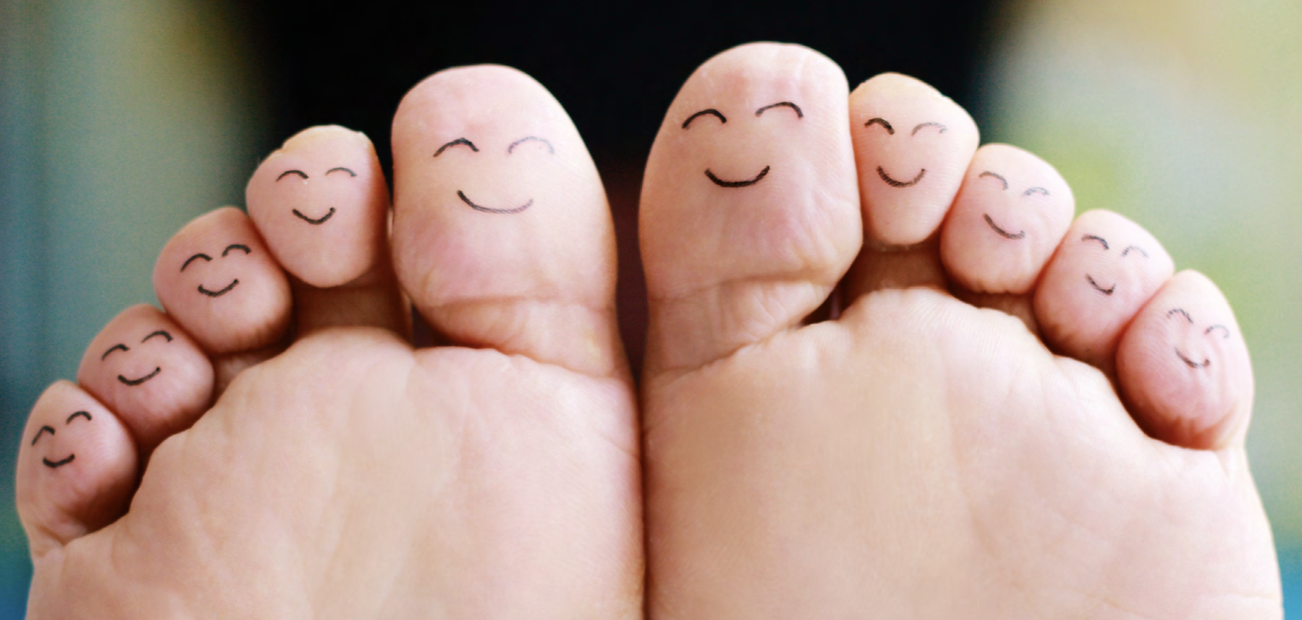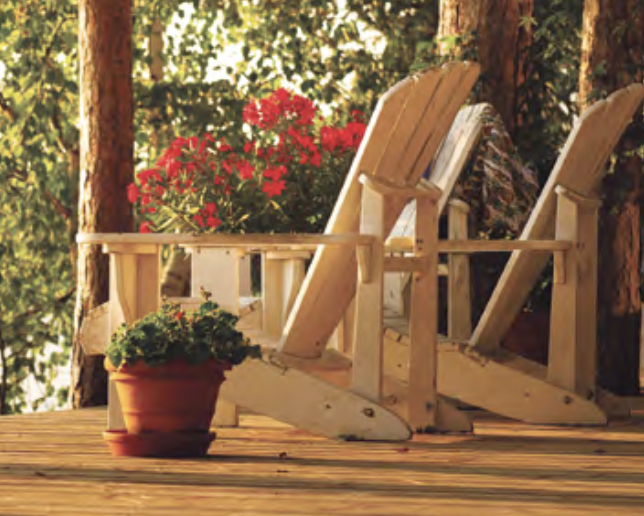By Wendy Haaf
Feet you can’t walk on will make your life miserable, but there are specialists who have solutions to offer.
Some time after businesses across the country were closed to prevent the spread of COVID-19, Nadine Webster and other foot specialists began to notice a surge in the number of people seeking help for certain easily preventable foot problems. For example, many cases of foot pain turned out to be caused at least in part by one seemingly innocuous change in daily routine: when they began working from home, many former office workers started spending the bulk of their day either barefoot or wearing socks or slippers.
“A lot of problems are solved with proper footwear,” says Webster, who is president and chief chiropodist at the Kawartha Total Foot Care Centre in Bobcaygeon, Ont. (Ontario is the only jurisdiction in Canada in which the title “chiropodist” is used. Both chiropodists and podiatrists—the two terms are synonymous—can diagnose and treat foot conditions and perform soft-tissue surgery.) Bare feet or slippers offer next to no support, protection, or cushioning against the significant stress that’s placed on the feet, even if they’re “only” supporting our weight while we stand. Then there are the changes our feet undergo as we age, starting with the loss of the fatty pad covering the soles. Therefore, podiatrists almost universally “advocate for [wearing] shoes around the house,” Webster says.
“I tell people ‘Treat your home like your office—get up in the morning, put on your shoes, and don’t take them off until the end of the day,’” says Helen Rees, a podiatrist at Atlantic Podiatry in Quispamsis, N.B., and vice-president of the Canadian Federation of Podiatric Medicine. If you’re concerned about tracking dirt all over your floors, buy a pair of shoes for indoor wear only.
Pinpointing a lack of footwear as the source of or a contributor to pain or other foot problems is just one example of the specialized skills podiatrists have to offer. Before you try to diagnose and treat even the most seemingly simple issues affecting the area from just above your ankle to the tips of your toes, including those involving the skin, you should consider consulting an expert. “Just as you’d call a dentist straightaway if you had a bad tooth, the podiatrist should be one of your first points of call,” Rees says.
For one thing, these professionals have the training and experience to differentiate between conditions that have symptoms that look nearly identical. For example, that hard lump of skin on the sole of your foot that makes standing painful might look to you like a corn or callus, but it could be a plantar wart caused by a viral infection. And even if you’re right about what’s wrong, some DIY treatment products can damage the skin, setting the stage for complications such as infection, particularly if you have poor circulation or diabetes. (If you have diabetes, you should have your feet examined by a health professional at least every year to screen for potential consequences, such as a loss of feeling due to nerve damage. Unfortunately, according to a July 2022 review of 21 reports, only 53 per cent of Canadians with the condition reported doing so.)
Foot specialists don’t merely treat symptoms; they pin down the underlying cause, so that it can be properly addressed. For instance, sometimes an underlying culprit is an abnormality in the structure or mechanics of the foot itself, which can often be managed with non-invasive treatments.
With that in mind, here’s the low-down on some of the most prevalent foot problems, as well as common culprits and the strategies for dealing with them.
Bunions
In people who are genetically susceptible, the big toe can gradually change position so the tip points towards the other toes. As this occurs, the base of the toe juts outward, forming a bulge at the joint. While factors such as poor footwear (for example, too pointed or narrow) can exacerbate or accelerate this process, typically, “it’s like nearsightedness or farsightedness—it has to do with an inherited structural foot type,” Webster says.
Conservative treatments can include “putting a wedge between the first and second toe to help realign the joint” and selecting shoes that are roomy enough to accommodate the bump, she explains, adding “Sandals are sometimes helpful.” Custom shoe inserts called orthotics can also be used to redistribute the wearer’s weight and ease pressure on the area.
Corns and Calluses
Corns and calluses stem from the body’s attempt to safeguard the skin in areas where it’s repeatedly subjected to rubbing or pressure. Calluses are more diffuse areas of thickened skin, while corns are typically smaller and may have a concentrated core. However, this protective process backfires when the buildup of skin digs into the tissue beneath it. When corns crop up on the soles, “it feels almost as if you’re walking on rocks,” explains Matthew Turanovic, a podiatrist at YEG Foot and Ankle in Edmonton.
This excess friction or pressure can occur for any number of reasons. Corns on the tops of the toes can be due to shoes that aren’t deep enough or a toe that is no longer straight but clenched or bent into a “claw,” “hammer,” or “mallet” shape. (The description hinges on which one of the toe joints remains abnormally flexed.) Similarly, a corn on the bottom of the big toe is often related to stiffening in one of the joints (the first metatarsal), “so that it’s not moving back into alignment with the other toes,” Webster says.
The way the foot moves mechanically can also contribute to a number of foot issues, including corns and calluses. “It’s not just the shape of the foot but how a person is walking and the types of activities they’re doing that can cause those pressure points,” Webster observes.
For example, certain inherited foot traits, such as high arches, may make you more vulnerable to developing corns on the ball of the foot—the prominent area on the bottom where the toes attach.
In some cases, simple strategies can relieve the pressure enough to allow you to walk comfortably. Wearing well-constructed shoes (with soles that don’t easily twist out of shape) that are deep and wide enough to accommodate your foot, with adequate cushioning and uppers made of a forgiving material (leather is out), is a good first step. “Orthopaedic-style shoes are good, or running shoes,” Turanovic says. Not going barefoot can also help. If the ball of your foot is one of the high-pressure areas, a silicone shoe insert can provide extra padding.
Keeping the skin as supple as possible can improve its ability to absorb shocks and friction. “Make sure you’re moisturizing your feet daily,” Turanovic says. He recommends using an over-the-counter cream containing urea, which can soften thick skin. “The best time to use it is after a bath or shower because the pores are open, so the cream can penetrate the skin more effectively.”
However, Turanovic recommends staying away from two other over-the-counter products that are marketed to treat corns: medicated corn pads and mechanical or electric graters and shavers. The pads contain a weak acid that can burn healthy skin, posing a risk for infection, and the gadgets are too clumsy to use accurately and so can cause injury.
If these measures don’t provide sufficient relief, a podiatrist can identify the cause of the problem and recommend solutions. For instance, “shoes that have an exaggerated or rocker sole or toe spring can do some of the work of propelling you forward, thereby easing pressure on the balls of the feet,” Webster says. Orthotics can redistribute pressure, diverting it from specific joints, as well. And a toe that’s abnormally curled but can still be manually stretched flat can often be straightened with an in-office procedure to release the tendon that’s causing the curl.
Should the problem turn out to be a plantar wart, foot specialists can usually offer a greater range of treatment options than the liquid nitrogen typically used by other health professionals. “I personally have equipment called Swift, which is a microwave machine,” Rees says. “It’s great because it’s only one treatment every four weeks, compared to weekly.”
Heel Pain
Multiple scenarios can produce pain in the heel. “It can be due to bursitis, inflammation of the bone marrow of the heel, or referred pain from Achilles–-area tendinitis,” Rees says. Webster says she also sees stress fractures from participating in sports or repeatedly jumping down from truck beds. “I also had a lady come in once who said it felt like there was a rock stuck in her heel—and she did have a piece of gravel in there,” she says.
The leading reason for heel pain is a condition that seemed to become even more prevalent in the early months of the COVID pandemic—plantar fasciitis. “That’s due to inflammation of the plantar fascia ligament, which starts at the heel, travels through the arch of the foot, and ends in the toes,” Turanovic explains. This can happen as a result of standing or walking on hard surfaces for long periods, particularly without sufficient support. If your feet flatten out like pancakes when you’re standing, this can make you more susceptible, too. These things “put pressure on the plantar fascia, and you get little micro-tears within its fibres, and that leads to inflammation and pain in the heel,” Turanovic says. The pain tends to be most intense first thing in the morning or after you’ve been sitting for a long time, and it may worsen during or following activities such as walking or standing.
“Conservative treatments you could do at home include making sure you have good supportive shoes, like runner with built-in arch support, and avoiding bare feet,” Turanovic says.
Methods for managing this source of heel pain in the short term include applying ice packs (avoid direct contact with the skin) and/or an over-the-counter cream containing a non-steroidal anti-inflammatory medication. Stretching the ligament as soon as you get up in the morning and before activities can offer relief, too. And there’s evidence that exercises to stretch the plantar fascia and calf muscles ease plantar fasciitis pain over time as well. (For specific exercises and stretching instructions, Turanovic suggests consulting a physiotherapist or searching online. Reputable sources include HealthLinkBC and Alberta Health Services.) Very often, the pain will begin to improve after a few weeks of these treatments—if not, or if it worsens or interferes with your day-to-day activities, see your foot specialist.
Thickened or Ingrown Toenails
In many cases, thickened toenails are the product of a process similar to the one that creates a corn or callus. “It’s often caused from repetitive stress,” Webster says. This can be due to footwear such as slip-on-style shoes, shoes that are too short, or shoes that aren’t laced or fastened firmly enough. “If someone goes hiking wearing shoes that aren’t laced properly, that can lead to thickening of the nail,” Webster says. Abnormal curvature of the toe is another possibility. “You see that a lot with the first or fifth toe, where the toe is in a clawed position so the nail is touching the ground or the shoe,” she adds.
“Another cause of the nail thickening could be a fungal infection,” Turanovic notes. “For this, we would typically take a sample of the nail to see if it grows fungus when tested in a laboratory, because clinically, it’s hard to determine if it’s a fungal infection or a damaged nail.” Another advantage of seeing a foot specialist is that he or she can sort out whether the thickening is the result of a different condition entirely, such as psoriasis or poor circulation due to diabetes.
As with corns and calluses, relieving the source of the pressure with adjustments to footwear or orthotics can help prevent further thickening from wear and tear. One treatment option for some people with a fungal infection is a year-long course of oral medication—however, this is contraindicated “if you have liver issues or are taking some heart medications,” Turanovic says. For people who are unable or unwilling to take antifungal medications, treatment is similar to that recommended for thickened nails due to ongoing wear and tear: regular maintenance by a podiatrist to trim or file the nail down to a normal thickness.
A nail that grows in such a way that a sharp edge projects into the sensitive skin surrounding it produces what’s known as an ingrown nail. “This can be caused by a couple of things,” Turanovic says. One is nail shape. Either from birth or over time, the nail bows into an upturned “U” instead of lying flat on top of the toe, which can allow the corner of the nail to grow into the soft tissue. Thickened nails, for example, can gradually take on this abnormal shape.
Sometimes, simply cutting the nail straight across instead of down into the corners is sufficient to prevent this from occurring. If not, however, rather than attempting to cut the offending sharp edge out yourself, Turanovic recommends seeing someone with the skills and tools to do so in as accurate and sterile a manner as possible. “We have specialized instruments to cut the corner out and remove the whole piece at once,” he says. As the wound heals, regular saltwater soaks followed by the application of antibiotic ointment and a dressing are recommended to prevent infection.
For chronic ingrown nails, treatment options include ongoing maintenance by your podiatrist. Or, if you have no conditions (such as diabetes) that preclude it, there is a more permanent solution—a procedure conducted “under a local anaesthetic to remove the portion of the nail that continues to regrow so it doesn’t grow back,” Webster explains.
It can be daunting to consider having someone examine or touch your feet. “People have preconceived ideas—they think that it’s going to hurt or tickle or that they can’t stand anybody touching their feet,” Webster acknowledges. However, once they take that first step, they are usually pleasantly surprised. One of Rees’s recent patients, who’d just had large corns removed, is a case in point. “She was amazed that she had instant pain relief,” Rees says, adding, “Almost universally, people say ‘I should have had this done years earlier’ when they come for their checkup after a procedure to prevent the recurrence of an ingrown toenail.”
There’s usually more than one way to treat a given issue. “We work with people and give them options so they can decide what solution is going to work best,” Webster says.






